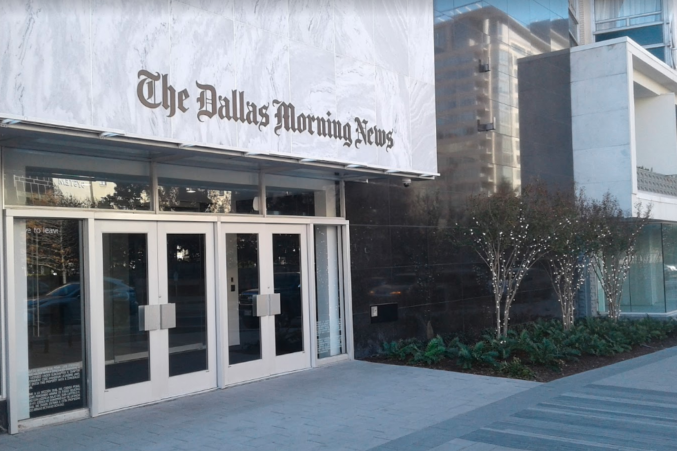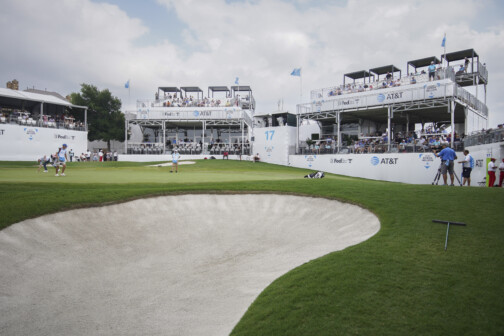“Before I was for taxes, now I’m against them. So I’m for raising taxes.”
——————
This is the thesis of Steve Blow’s recent column for the Morning News where he renounced his support of tolls. This change of heart apparently occurred after getting confused by the monstrous spaghetti of 635, itself is a confused jumble of intents trying and failing to handle the conflicting needs of regional throughput (point A to point B many miles apart) with local trips (multitude of nearby points A, B, C, D, etc.).
This is the common and short-sighted framing of the current argument. How do we raise revenue to fix our failing infrastructure (even though we won’t fix it anyway because we can’t stop building new), via taxes or user fees, tolls. Tolls are taxes and therein lies the false dichotomy.
A smarter, more fiscally sustainable view would be asking, 1) how can we raise revenue without raising tax rates – because increased tax rates won’t necessarily raise revenue if it reduces demand (property: to live there; tolls: to drive there), and 2) how can we design and build a more cost and energy efficient that is more equitable for the wide variety of needs of a large city population?
DECREASING COSTS THRU BETTER DESIGN:
First, let’s look at how simply being smarter about infrastructure and urban design can drastically reduce costs. Below is an example of two types of street networks as shown in Dan Burden’s presentation to the city of Fort Worth this week. One is a highly interconnected grid system with a multitude of route choice options and reduced trip length. The other is a mess of winding streets and cul-de-sacs. You might say that it offers benefits like low traffic or some bucolic simulacrum of nature or some such. It also has a cost that isn’t appropriately reflected when property tax rates are the same for both.
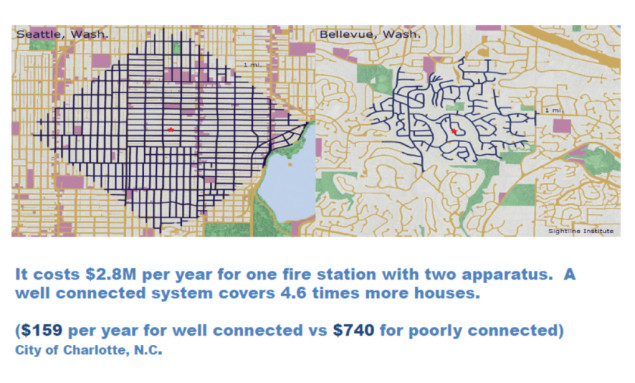
Charlotte looked into this and found that it costs more than four times per household for fire protection in poorly connected street networks. Multiplied over a city of 1.2 million, we’re talking about a potential difference of nearly $700,000,000 in costs between the two.
Those costs don’t end with the fire department:
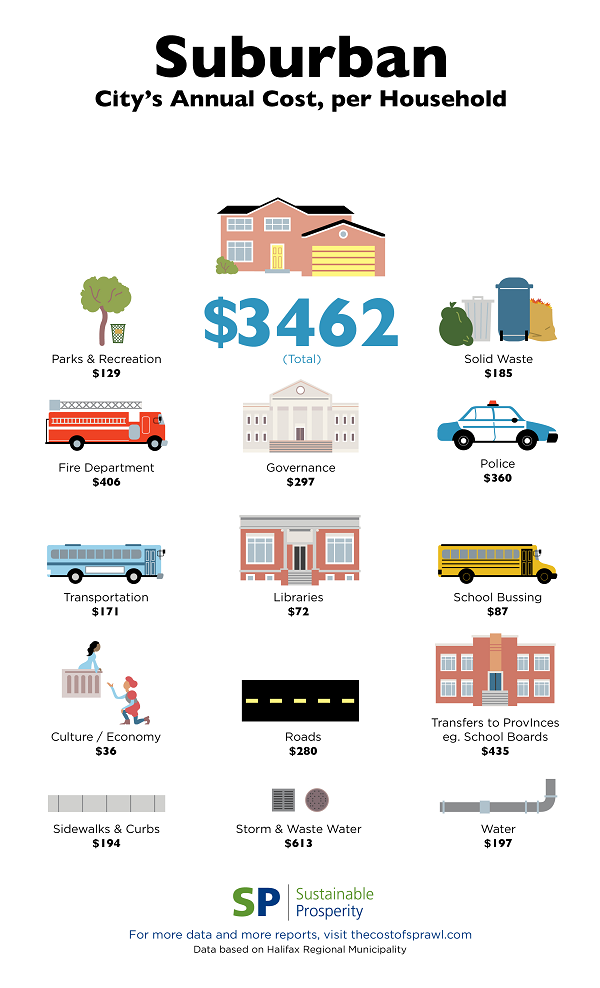
In fact, nearly every public service is significantly more expensive.
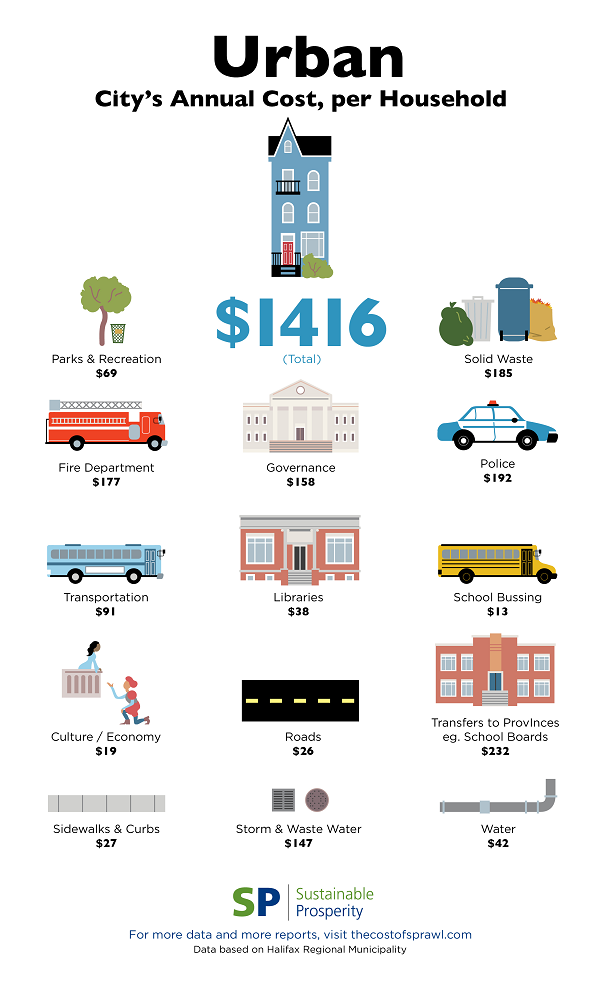
There are some apples to oranges in that this is from a Canadian study so that these costs might not be directly comparable to US cities, but they are apples to apples to each other. Cities exist for as long as civilization has because of the inherent efficiencies they create. It is the low density, disconnected, and isolated pattern of development that is new for the first time in history. And this is precisely what is failing to the point where we don’t know whether to raise taxes or raise taxes (tolls) in order to maintain what is inherently a failing system.
Instead, we need to be thinking about…
INCREASING TAX BASE THROUGH INCREASED LIVABILITY
Below is a comparison of different development types and the amount of tax base they produce per acre. Feel free to compare to the above and think about which are net positive.

When the Sam’s Club was proposed in the CityPlace area, I did a similar study below showing what local examples produce per acre

It’s the mixed-use developments that are such value generators for the city, that they pay for everything else, including the low density, disconnected, single-family development that cost the city more than it produces. In effect, having too much low intensity land uses means it requires constant bail-outs from a general fund and a neverending scrambling for revenue while potholes appear everywhere. In other words, we need more higher intensity mixed-use development, which requires an entirely different kind of infrastructure that is not dominated by vehicle throughput in order to work.
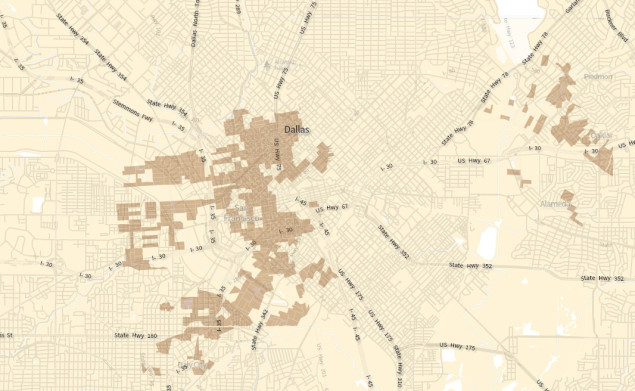
The above shows every San Francisco census tract that is more dense than any census tract in uptown, the threshold here is approximately 20,000 people per square mile. You can see it covers most of uptown, downtown, Near East, the design district, West Dallas, the Cedars, and even parts of North Oak Cliff.
Since mixed-use developments perform the best in terms of tax yield per acre, that means we need a few things:
1) Mixed-use implies residential. For residential to occur, we need increased livability. As Dan Burden told the Fort Worth city council yesterday, the basis of livability is where cars don’t drive fast.
2) Mixed-use also implies ground floor retail. For ground floor retail to work, there needs to be a minimum threshold of pedestrian traffic, which means highly connected street networks (highways and arterials disconnect for the sake of regional throughput) and oh, yeah, lower traffic speeds.
This is not a question of taxes vs tolls, but simply investing in the kind of infrastructure to meet the demand for walkable urban living at all scales and income levels. It’s the only equitable and profitable way to build a succesful city that can and will last the test of time.




